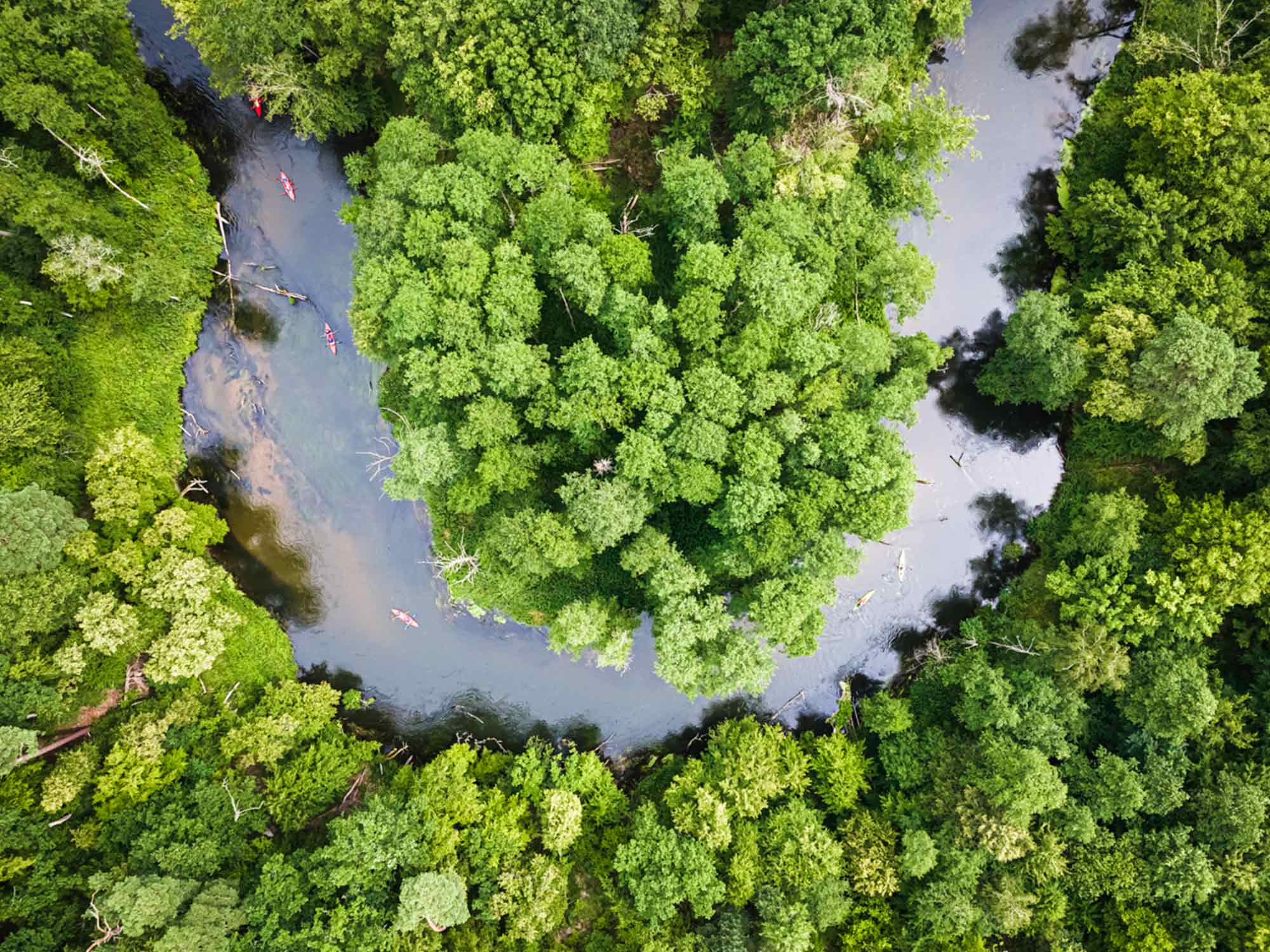A Shift from “Pledges” to “Action”
In November 2025, the 30th Conference of the Parties (COP30) to the United Nations Framework Convention on Climate Change was held in Belém, Brazil. From November 10 to 21, tens of thousands of participants gathered—including government delegations from about 200 countries, as well as representatives from international organizations, NGOs, and academia.
This conference drew particular attention because humanity’s previous commitments have reached their limits. In the 2015 Paris Agreement, around 200 countries agreed to limit the rise in global temperature to 1.5°C above pre-industrial levels. They also set a goal to keep the increase “well below” 2°C. If the global average temperature rises by more than 2°C, climate disasters—such as extreme heatwaves and sea-level rise—are expected to become far more severe than in a 1.5°C scenario. This is a clearly established fact, backed by strong scientific evidence. [1]
However, despite the global expansion of renewable energy, the climate targets currently submitted by each country fall far short of achieving the 1.5°C goal. [2]
Amid this urgent situation, Brazil—the presidency of COP30—declared that this year’s conference would be “a COP of action, not promises.” Choosing Belém, located in the heart of the Amazon rainforest, as the meeting venue also reflects Brazil’s strong determination to call for action rather than words.

Key Issues and the Six Action Agendas
At this year’s conference, discussions are centered on two major core issues and six practical action areas.
The first key issue is the Nationally Determined Contributions (NDCs) for greenhouse gas reduction. Under the Paris Agreement, each country must strengthen its reduction targets every five years, and this year marks a crucial moment when countries are required to officially submit their NDCs for 2035. This is a pivotal discussion that will determine the direction of the next decade in achieving the 1.5°C goal.
The second key issue is the establishment of the Global Goal on Adaptation (GGA). Just as mitigating the climate crisis is vital, enhancing the ability to adapt to disasters already unfolding is equally important. During this conference, discussions will intensify on assessing the progress of the GGA and developing concrete, quantifiable indicators that can measure adaptation.
In addition, the Brazilian presidency presented the Six Action Agendas for implementation—six specific areas of practical action designed to ensure the successful execution of COP30 outcomes.
1. Transitioning Energy, Industry and Transport: Key tasks include the phased reduction of fossil fuels, tripling renewable energy capacity by 2030, and doubling energy efficiency.
2. Stewarding Forests, Oceans and Biodiversity: Reflecting the host country’s commitment, international agreements will focus on protecting tropical rainforests—especially the Amazon—and preventing biodiversity loss.
3. Transforming Agriculture and Food Systems: Major points of discussion include reducing greenhouse gas emissions from the agricultural sector, ensuring food security, and improving the sustainability of food supply chains.
4. Building Resilience for Cities, Infrastructure and Water: Discussions focus on adapting urban infrastructure to rapidly changing climate conditions and establishing integrated water-management systems.
5. Fostering Human and Social Development: The core keywords are “Just Transition” and “Climate Justice,” centered on human rights.
6. Unleashing Enablers and Accelerators: Key topics include expanding climate finance, transferring technology from developed to developing countries, and strengthening capacity-building to support effective implementation.

A Closer Look at COP30
COP30 is a massive, two-week-long marathon. To manage these complex and wide-ranging discussions efficiently, Brazil—the host country—designates specific themes for each day of the conference, drawing global attention to key issues. These are called “Thematic Days.” [3]
This is closely connected to the Six Action Agendas discussed earlier. For example, one of the thematic days is designated as “Energy Day,” during which discussions focus on ways to triple renewable energy capacity. Another day is “Food & Agriculture Day,” dedicated to exploring solutions for sustainable food systems. This thematic structure is a strategy to make efficient use of the limited two-week timeframe. By approaching the agenda through themed days, participants can engage in more focused and concrete discussions on how to implement complex climate goals.
COP30 Schedule Summary
| Date | Main Topics |
| 10-11 | Adaptation, Cities, Infrastructure, Water, Waste, Local Governments, Bioeconomy, Circular Economy, Science, Technology, and Artificial Intelligence |
| 12-13 | Health, Jobs, Education, Culture, Justice and human rights, Information integrity, Worker, Global Ethical Stocktake |
| 14-15 | Energy, Industry, Transport, Trade, Finance, Carbon markets, and Non-CO₂ gases, supporting the global push to triple renewable energy, double energy efficiency, and transition away from fossil fuels |
| 17-18 | Forests, Oceans, and Biodiversity, while spotlighting Indigenous peoples, Local and traditional communities, Children and Youth, and Small and medium entrepreneurs |
| 19-20 | Agriculture, Food Systems and Food Security, Fisheries, and Family Farming, Women, Gender, Afro-descendant, and Tourism |

Diverse Solutions for Implementation
COP30 is more than just a negotiation table. In line with its theme of “implementation,” a number of innovative programs aimed at immediate action will be carried out simultaneously. Let’s look at the main projects of COP30 that aim to build a sustainable and resilient future.
(1) Urban Sector: Sustainable Cooling and the Circular Economy
A representative initiative is the “Beat the Heat Implementation Drive,” led by Brazil and UNEP. This program promotes sustainable cooling solutions for cities through measures such as applying cool-roof technologies, expanding urban green spaces, and establishing early warning systems for heat waves. Brazil’s “Bairro do Mutirão” project is an excellent example of integrating circular economy principles and smart design to achieve urban cooling, water conservation, and enhanced connectivity all at once. [4]
(2) Food Sector: Reducing Methane Through Food Waste Management
UNEP is officially launching the “Food Waste Breakthrough” campaign. Over the next five years, national governments, cities, and companies will work together to cut food waste in half and reduce methane emissions by 7%. [5]
(3) Finance and Ecology: A New Mechanism for Protecting Tropical Rainforests
One of the most notable initiatives is the “Tropical Forest Forever Facility.” This innovative financial mechanism provides monetary compensation to countries that conserve tropical rainforests — essentially paying them for protecting their forests. Alongside existing REDD+ programs, it has the potential to supply more than half of the total funding needed to safeguard tropical forests worldwide. [6]

From Belém to Our Daily Lives
The question COP30 poses to us is clear: “What will we put into action?” We must remember that the large-scale agendas discussed in Belém, Brazil ultimately connect to the small choices we make in our everyday lives. Choosing reusable items over disposables, taking public transportation each day, and making efforts to reduce food waste — all of these are part of the “shift to implementation” that COP30 has emphasized countless times. Even after COP30 ends, our actions must continue. New change begins right here. Moving from merely knowing the crisis to acting on it — that is how we understand and shape the future.